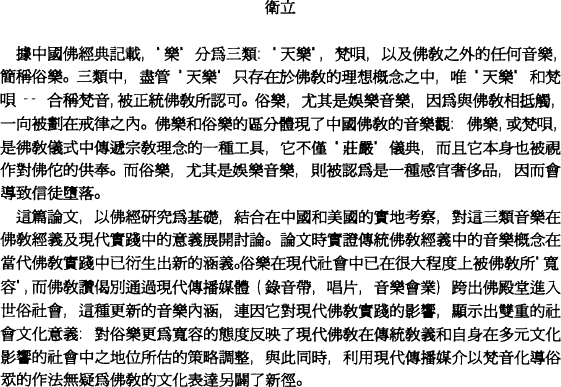Article contents
The Duality of the Sacred and the Secular in Chinese Buddhist Music: An Introduction
Published online by Cambridge University Press: 07 March 2019
Extract
In Chinese Buddhist music studies, an investigation of the meaning and concept of music should involve not only a study of the codified doctrine but also a study of the Buddhist practice and its sound products. The aim of this paper is to examine the meanings of music in Chinese Buddhist doctrinal and practical contexts, and to demonstrate how the codified norms of music have significantly been reinterpreted in the contemporary Buddhist practice. I shall first discuss the notions of music in Chinese Buddhist discourse, under an analytical framework based on a Buddhist-oriented classification. I shall then examine the practice of these different categories of music from a historical perspective. This will be followed by a brief survey of Chinese Buddhist musical practice in the present-day, which is based on field work in the United States and China, showing the changes and adaptations in Chinese Buddhist music-making under the process of global modernization.

- Type
- Articles
- Information
- Copyright
- Copyright © 1992 by the International Council for Traditional Music
Footnotes
This paper was originally presented at the 31st ICTM World Conference in Hong Kong in July, 1991, under the title “Tianyue, Fanbei, and Suyue: Some Notions of Music in Chinese Buddhism.”
References
References Cited
- 3
- Cited by


